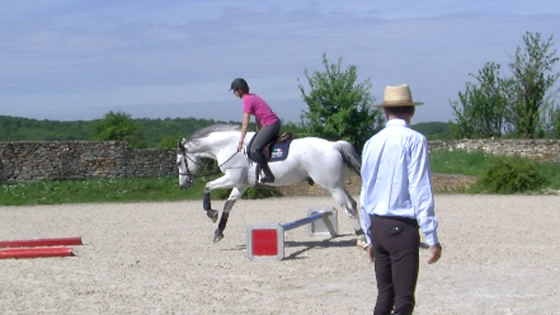Improve your balance and your upper body relaxation when riding

Michel offers a specific exercise that is extremely effective to release any tensions the rider might have especially in the arms and shoulders. We all know how bad the rider’s upper body stiffness can impact the horse’s mouth and consequently the comprehension of the aids. Michel offers an easy solution to correct this bad habit and provides good reflexes...
Michel offers a specific exercise that is extremely effective to release any tensions the rider might have especially in the arms and shoulders. We all know how bad the rider’s upper body stiffness can impact the horse’s mouth and consequently the comprehension of the aids. Michel offers an easy solution to correct this bad habit and provides good reflexes suitable for all level of riders. This training will also help the rider stay centred even when turning. The horse can move with more freedom and consequently give more attention to the rider’s aids. Directing a horse with precision becomes then, extremely easy whatever the gait.
This exercise is shown on the sheet H6 of the Training program 1
Michel shows us the exercise, riding an 11 year old grey mare. After explaining the advantage of his method, Michel goes over an “easy to do” set-up of ground poles and cones. To begin with, you can replace the ground poles with some cones to go through or around. The exercise is to be done at the lower gaits first and then if successful on it, at a canter. Once you have well mastered the exercise, don’t hesitate to modify the track. You can also practise it on a small course of cavalettis keeping in mind that the upper body relaxation is key.
Michel shows us the exercise, riding an 11 year old grey mare. After explaining the advantage of his method, Michel goes over an “easy to do” set-up of ground poles and cones. To begin with, you can replace the ground poles with some cones to go through or around. The exercise is to be done at the lower gaits first and then if successful on it, at a canter. Once you have well mastered the exercise, don’t hesitate to modify the track. You can also practise it on a small course of cavalettis keeping in mind that the upper body relaxation is key.










